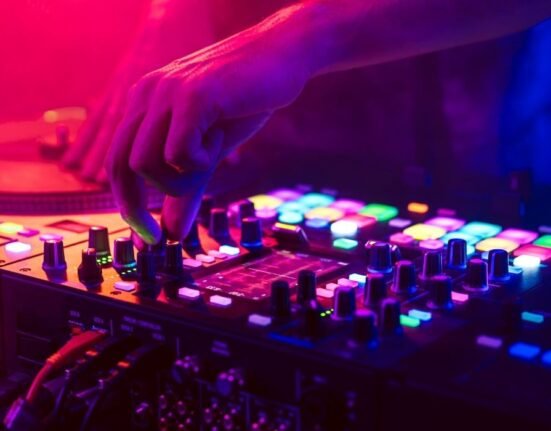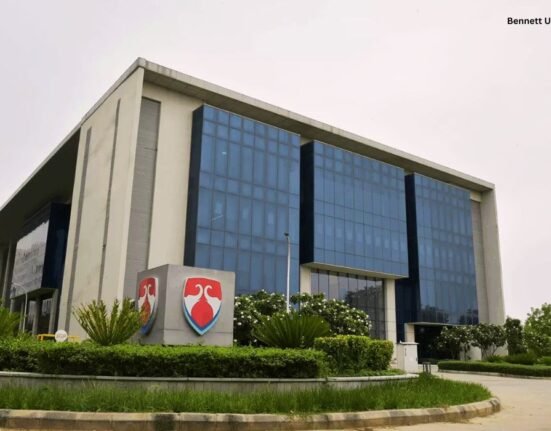“I’ve been zoning out since childhood. Earlier, I used to zone out during my school lectures, and even now I sometimes zone out during ongoing conversations.”
These were the words of Alia Bhatt who came for a promotion of her film “Jigra” in an interview with the Lallantop YouTube channel. Later in the conversation with Saurabh Dwivedi (the face of Lallantop), Alia said, “Recently I got a psychological test and found that I’m quite high on the spectrum of ADHD.” During this conversation, she mentioned that sometimes she zones out while playing sports as well. The viewers and fans of Alia have been going ballistic about this news and are curious to know about,
- What is ADHD in psychology?
- What are the symptoms of ADHD?
- How can one manage ADHD?
Other Celebrities with ADHD
Alia Bhatt isn’t the only one; many other famous people also have ADHD. Some well-known individuals include:
- Emma Watson: She has a diagnosis of combined/hyperactive type ADHD. Emma hasn’t talked much about her condition, but the ADHD Foundation mentioned in a social media post that doctors have diagnosed and treated her since she was a kid during the Harry Potter filming. Also, her many achievements in movies and women’s rights, plus her clear grace and style, show us that even very talented women can have ADHD.
- Ryan Gosling: As a kid, Ryan Gosling was diagnosed with ADHD and struggled to read. Kids at school picked on him, and he didn’t make friends until his teen years. His mom worried so she taught him at home for a year. Soon after, he started acting.
- Michael Phelps: Michael Phelps is one of the most decorated Olympians. But swimming isn’t just a winning sport for Phelps; it’s a way for him to cope with his ADHD. His mother described her son’s exhibition of classic ADHD symptoms: not sitting still or being able to focus. However, he channelled that into swimming, and with “continuous praise and positive reinforcement” Phelps had the encouragement he needed to score the gold
ADHD In India
In India, doctors often miss or diagnose ADHD in girls who might not show clear signs. Many people don’t find out they have it until they’re grown up, which can cause big problems at school and work. The shortage of trained experts and proper testing tools makes this worse. Different states are taking steps to tackle ADHD and boost awareness, diagnosis, and treatment.
In Maharashtra, special clinics are being set up in cities where experts test and treat patients. These clinics often team up with schools to spot ADHD in students making sure kids get the help they need. In Delhi, several NGO campaigns are working to teach parents and teachers about ADHD. They hold workshops and talks often to help people spot signs and understand why quick action matters. Schools in the city are now training teachers more and more to help students with ADHD.
What is ADHD?
ADHD or Attention Deficit Hyperactivity Disorder, is a neurological disorder that shows up as a mental health issue often seen in young kids. ADHD can make it hard to focus, get organised, control your mood, and often lead to acting out without thinking and being highly active. Scientists have found clear differences between the brains of kids with ADHD and those without it, especially in the frontal lobe of the brain. But some people don’t find out they have ADHD until they’re older.

The National Institute of Mental Health thinks more adults might have ADHD than the numbers show. Many girls also don’t get diagnosed until they’re grown up because ADHD can look different in females. If ADHD goes untreated, it can disorganise your everyday life, from work and school to how you get along with others. NIMS also points out that people with ADHD show a continuing pattern of:
- Inattention: This usually boils down to having trouble staying focused on important tasks, paying attention, or being organised. These issues do not stem from defiance or a lack of understanding.
- Hyperactivity: This involves being restless or always moving even when it’s not appropriate. It can include excessive fidgeting tapping, or talking too much.
- Impulsivity: This means acting without thinking, intruding into someone else’s conversations, or struggling with self-control. It can also involve wanting immediate rewards, being unable to wait for things or not being able to think about long-term effects.
While ADHD often gets diagnosed in kids, many adults still deal with its symptoms. Alia mentioned she feels most focused and involved when she acts or spends time with her daughter Raha. This shows how certain activities can help manage the challenges that ADHD brings.
How do Therapists/doctors diagnose ADHD?
When you visit a therapist or a doctor for the diagnosis, they would not simply give you a questionnaire to test ADHD because there is no single test to diagnose it. It takes a series of observations with doctors and professionals for confirmation. These could look like –
- Interviews with Adults in the case of children.
- Direct Observation by a professional.
- Psychometric Tests that are used to measure ADHD.
Doctors can diagnose a person with one of three types of ADHD, depending on their specific symptoms :
- Inattentive: Symptoms of not paying attention, but no hyperactivity or impulsivity.
- Hyperactive-impulsive: Symptoms of being active and/or acting without thinking, but no issues with attention.
- Combined: Symptoms of both not paying attention and being active and/or acting without thinking.
ADHD symptoms need to start in childhood (before age 12). Kids can show signs as young as preschool, and these often stick around through the teen years and into adulthood. The rules for diagnosis change a bit based on age.
- Kids up to 16 years old must show at least six signs of not paying attention, being overactive and/or acting without thinking, or both.
- Adults and teens over 16 need to show at least five signs of not paying attention, being overactive and/or acting without thinking, or both.
For an ADHD diagnosis, a person’s symptoms also have to:
- Last for at least 6 months
- Show up in two or more places (like at home, at work, in school, or when hanging out with friends)
- Get in the way of or hurt how you do in social situations, school, or work
Managing ADHD
To handle ADHD, you’ll need to use a mix of different approaches:
- Therapy: CBT helps people spot negative thinking and learn ways to cope.
- Medication: Doctors may prescribe stimulants or non-stimulants to control symptoms.
- Lifestyle Changes: Regular workouts, a set schedule, and using tools to stay organised can boost daily function.
- Mindfulness Methods: Things like meditation and slow breathing can reduce worry and sharpen focus.
How is ADHD treated?
Though ADHD has no cure, current treatments can lessen symptoms and boost functioning. Common approaches involve medicine, therapy, and other behaviour-based methods. For kids, treatment often includes teaching parents and setting up school programs. Many ADHD patients get a mix of treatments.
Medicine
ADHD medicine helps many people cut down on their restlessness and rash actions. It also helps them focus better, work more, and learn more. Sometimes, doctors need to try different drugs or doses to find what works best for each person. Anyone on ADHD medicine needs close monitoring by their doctor.
- Stimulants: Doctors prescribe stimulants to treat ADHD. These drugs boost brain chemicals that play a big part in thinking and paying attention.
- Non-stimulants: Doctors can also use non-stimulant drugs to help with ADHD. They take more time to kick in than stimulants, but they can make it easier for people with ADHD to focus, pay attention, and control their impulses.
The U.S. Food and Drug Administration (FDA) hasn’t approved non-stimulants to treat ADHD. Still, doctors may prescribe them alone or with stimulants to manage symptoms. They might choose a non-stimulant when stimulants cause unwanted side effects, don’t work well, or need a boost in effectiveness. For example, antidepressants can help if someone has ADHD along with anxiety, depression, or another mood problem.
Doctors say stimulant and non-stimulant drugs are safe when taken under their watch. But all drugs can cause problems if you take too much or use them wrong. Your doctor needs to know about other drugs you take and keep an eye on how the meds affect you. Doctors and patients should team up to pick the right drug and amount. For the newest info on drugs, talk to your Therapist. You can also learn more about stimulants and other drugs for mental health.
Therapy And Ways To Change Behaviour
Different types of psychotherapy and other behaviour-based treatments have an impact on people with ADHD and their families to manage symptoms and boost day-to-day functioning. Therapy helps many kids, teenagers, and grown-ups. But for children and teens with ADHD, all kinds of therapy need parents to take part. Therapy that involves the child (without the parents) doesn’t work well to control ADHD symptoms. It might be more useful to deal with signs of worry or sadness that can happen alongside the disorder.
- Behavioural therapy aims to help people change their behaviour. It might involve the therapist giving practical help such as assisting to organise tasks or finish schoolwork, or guiding how to work through tough events. Behavioural therapy also teaches people how to keep an eye on their behaviour and praise themselves for acting in a desired way such as keeping anger in check or thinking before acting.
- Cognitive behavioural therapy helps people learn to be aware and accept their thoughts and feelings to boost focus and concentration. The therapist can help people with ADHD adapt to life changes that come with treatment such as taking time to think before acting or fighting the urge to take needless risks.
- Social skills training helps people learn how to interact with others. It might involve a therapist showing kids how to take turns, share toys, ask for help, or deal with teasing. Grown-ups can pick up communication tricks like listening well and getting better at controlling themselves and fixing social problems. The training can also cover how to understand facial expressions and voice tones, and how to react in the right way.

Families might feel frustrated, blame each other, and get angry before a child receives an ADHD diagnosis. Both parents and kids could benefit from expert help to move past these negative emotions. Mental health experts can teach parents about ADHD and its impact on family life. They can also help kids and their parents learn new skills, change their outlook, and improve how they interact with each other.
- Family and marital therapy helps family members and partners discover effective ways to handle disruptive behaviours, promote behaviour changes, and enhance interactions with the person who has ADHD.
- Parenting skills training (behavioural parent management training) teaches parents techniques to encourage and reward positive behaviours in their children. Parents learn to use a system of rewards and consequences to change their child’s behaviour, to give quick and positive feedback for behaviours they want to encourage and to ignore or redirect behaviours they want to discourage.
- Stress management techniques benefit parents of children with ADHD by boosting their ability to cope with frustration allowing them to respond to their child’s behaviour.
- Support groups give parents and families a chance to connect with others who face similar issues and worries. These groups meet regularly to share challenges and wins, swap info about experts and tactics, and chat with specialists
Conclusion
ADHD, or Attention Deficit Hyperactivity Disorder, is a complex neurological condition that affects people of all ages. It can make it hard to pay attention, stay still, and control impulses. Alia Bhatt’s story shows that many people don’t spot their symptoms until they’re older, which proves we need to learn more about ADHD. To manage ADHD well, people often need a mix of therapies, medicine, lifestyle changes, and mindfulness practices that suit their specific needs. While we can’t cure ADHD, the right treatment plan can help people function better in daily life. When families and communities create a supportive and understanding environment, people with ADHD can succeed and use their unique talents.
References +
- Goldman, R. (2024, February 16). Symptoms of adult ADHD. Healthline. https://www.healthline.com/health/adhd/adult-adhd#what-it-is
- Attention-Deficit/Hyperactivity Disorder. (n.d.). National Institute of Mental Health (NIMH). https://www.nimh.nih.gov/health/topics/attention-deficit-hyperactivity-disorder-adhd
- ADHD Embrace. (2024, September 18). Famous People with ADHD – ADHD Embrace. https://adhdembrace.org/famous-people-with-adhd/
- ADHD/ADD testing & diagnosis. (2024, May 1). WebMD. https://www.webmd.com/add-adhd/childhood-adhd/adhd-tests-making-assessment













Leave feedback about this